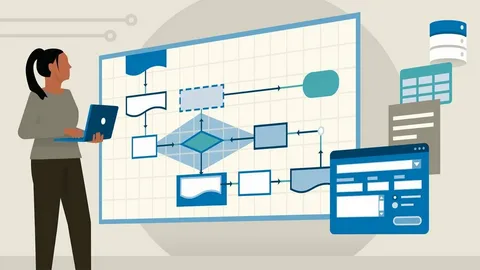ODANC: Meaning, Uses, Benefits, and Future Insights
ODANC is a term that has appeared across multiple sectors, including healthcare, technology, and business. Its exact meaning can vary depending on the context, making it both intriguing and sometimes confusing for professionals and enthusiasts alike. Despite this ambiguity, understanding ODANC is important, as it often plays a role in decision-making, procedural guidance, and efficient communication.
The relevance of ODANC stems from its versatile applications. Whether it is part of a medical prescription, an organizational framework, or a technical protocol, the term carries weight in ensuring accuracy and clarity. Learning about ODANC allows individuals to navigate different industries more effectively and leverage its potential benefits.
What ODANC Stands For
ODANC is not a universally standardized term and can stand for different things in different fields. In medical contexts, it may appear as part of instructions or dosage guidance. For example, it could resemble abbreviations used in prescriptions or clinical notes. Understanding these meanings is essential for healthcare professionals to ensure patient safety and avoid errors.
In business or regulatory contexts, ODANC could represent committees, frameworks, or operational processes. Organizations might use it internally to denote specific systems, strategies, or projects. This flexibility in meaning makes ODANC a term that must always be interpreted based on the surrounding context.
Historical Background of ODANC

Although ODANC is a modern term in many industries, its origins can be traced to specialized jargon in healthcare and organizational systems. In medicine, abbreviations similar to ODANC have been used for decades to streamline communication and simplify instructions.
In the regulatory and business sectors, ODANC-like terms emerged as organizations sought concise ways to label committees, initiatives, or technical frameworks. Over time, its use spread, particularly in areas requiring precise documentation and structured workflows. Understanding the history of ODANC helps appreciate its current significance and evolving applications.
Applications of ODANC
In Healthcare
ODANC has practical uses in healthcare settings. It can appear in prescriptions, patient records, or treatment plans, guiding professionals on how to administer medication or follow procedures. This ensures clarity and reduces the risk of errors in patient care.
For example, some abbreviations similar to ODANC indicate dosage schedules, frequency of intake, or timing of medication. Professionals familiar with such terms can efficiently manage patient treatments and communicate clearly across departments.
In Technology
In the technology sector, ODANC can function as a code name or acronym for software systems, frameworks, or protocols. Its role may involve streamlining processes, improving project management, or standardizing technical procedures.
Companies often adopt ODANC internally to maintain consistency and clarity, especially when dealing with complex projects or innovative solutions. Its presence in technical documentation helps teams stay aligned and ensures that instructions are correctly implemented.
In Business and Industry
Businesses may use ODANC as part of operational frameworks, regulatory compliance processes, or internal initiatives. It can act as a guideline for decision-making, efficiency, and workflow management.
By leveraging ODANC, organizations can structure projects, define responsibilities, and monitor outcomes more effectively. Its adaptability across industries makes it a valuable tool for planning and executing tasks systematically.
Benefits of ODANC

The benefits of ODANC are evident in multiple domains. In healthcare, it enhances communication, minimizes errors, and improves the accuracy of patient care. By standardizing instructions or protocols, ODANC helps professionals work efficiently and maintain high-quality outcomes.
In technology and business, ODANC offers structured processes that streamline operations and promote consistency. It helps teams follow clear guidelines, reduces ambiguity, and fosters better collaboration. Furthermore, its role in regulatory or advisory contexts provides organizations with reliable insights for decision-making.
Challenges and Limitations
Despite its advantages, ODANC comes with certain challenges. Its multiple meanings can create confusion, particularly for individuals unfamiliar with the specific context. Misinterpreting ODANC in healthcare, business, or technology can lead to mistakes or miscommunication.
Another limitation is the lack of universal standardization. Since ODANC varies across industries, there is no single reference point for its meaning. This requires professionals to rely on context and documentation, which may sometimes be incomplete or ambiguous. Clear guidelines and training are essential to mitigate these limitations.
How to Use ODANC Effectively

Using ODANC effectively requires understanding its specific context. In healthcare, this involves referring to medical manuals, prescription instructions, or standard practices. Accurate interpretation ensures safe and effective patient care.
In business and technology, proper use involves following organizational guidelines, procedural manuals, or project documentation. Clear communication among team members and stakeholders is crucial to prevent errors and maximize the benefits of ODANC.
Future of ODANC
The future of ODANC looks promising, particularly as industries continue to adopt structured processes and standardized practices. In healthcare, increasing standardization could make ODANC more widely recognized and easier to interpret, improving patient outcomes and communication efficiency.
In technology and business, ODANC may evolve into standardized frameworks, software protocols, or project management tools. As more organizations integrate it into their operations, its relevance and usefulness are likely to grow, making it a key term in multiple professional sectors.
Best Practices for ODANC Implementation

Implementing ODANC successfully requires awareness and training. Organizations and professionals should educate themselves on its specific meanings and applications within their context.
Documentation should be clear and accessible, providing detailed explanations for team members. Regular updates and reviews can help ensure that ODANC is used consistently and effectively, maximizing its potential benefits across healthcare, technology, and business.
FAQs
What does ODANC mean?
ODANC can have different meanings depending on the context. It may refer to medical abbreviations, business frameworks, or technical processes.
Where is ODANC used most often?
ODANC appears in healthcare prescriptions, advisory committees, technology projects, and business operations.
Is ODANC a standard term?
No, ODANC is context-dependent and not universally standardized. Its interpretation varies by industry.
How can I understand ODANC correctly?
Understanding ODANC requires reviewing the specific context in which it is used, such as medical notes, technical documents, or organizational guidelines.
Will ODANC become more standardized in the future?
Yes, with increasing adoption in healthcare, technology, and business, ODANC could gain more standardized meanings over time.
What are the main benefits of ODANC?
ODANC improves communication, reduces errors, streamlines processes, and enhances decision-making across industries.
What challenges are associated with ODANC?
Challenges include multiple interpretations, lack of universal standardization, and potential miscommunication if not used carefully.
How can organizations implement ODANC effectively?
Organizations should provide training, clear documentation, and regular updates to ensure consistent and accurate use of ODANC.
Conclusion
ODANC is a versatile and important term with applications in healthcare, technology, and business. Its meaning depends on context, making understanding and proper use essential. While it can be confusing due to multiple interpretations, its benefits—such as improved communication, enhanced efficiency, and structured processes—make it a valuable tool. With continued adoption and potential standardization, ODANC is likely to remain relevant and increasingly useful across industries.
Related Post:
Sugarhill Ddot Age – The Young Rapper Taking Over Drill Music
Grandview Chatter – A Local Community Connection
Whitney Mathers: The Untold Story of Eminem’s Adopted Daughter